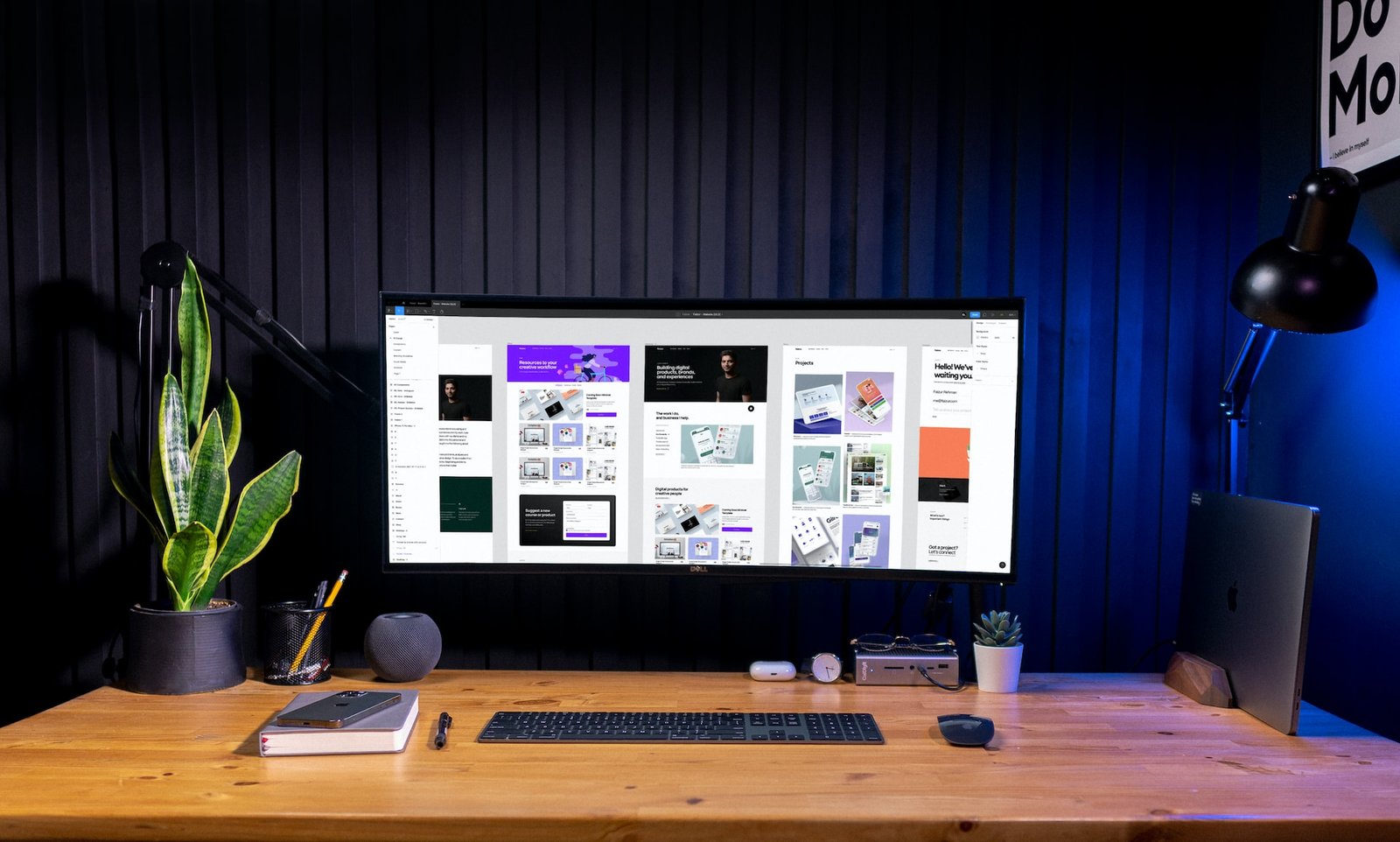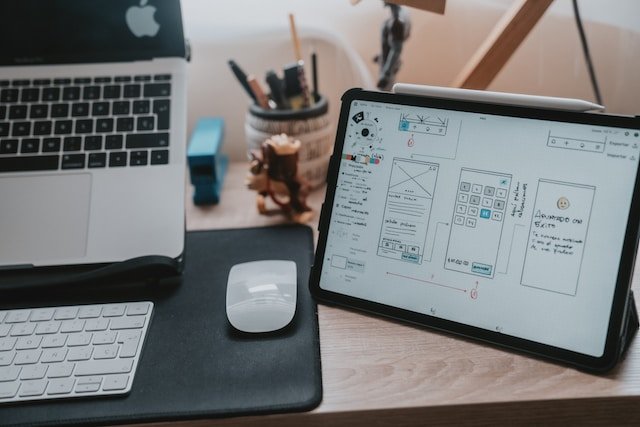
Can UX Design Be Done Remotely?
In recent years, the concept of remote work has undergone a significant transformation. With advancements in technology and changing work dynamics, many professions that were traditionally office-based have shifted to remote work settings. One such field is User Experience (UX) design, where designers focus on creating seamless and user-friendly digital experiences. This article explores the feasibility of remote UX design work and provides insights into the industries embracing remote UX designers, compensation trends, tips for transitioning into remote UX design, and much more. Whether you’re a seasoned UX designer or aspiring to enter the field, this guide will help you understand the possibilities and challenges of working as a remote UX designer.
The Feasibility of Remote UX Design Work
Embracing a New Paradigm
The traditional image of a UX designer huddled over a desk, collaborating closely with team members, and engaging in face-to-face user research may come to mind. However, the digital age has redefined the possibilities of work. UX design is no exception. With the right tools and strategies, remote UX design work has become not only feasible but increasingly prevalent.
Remote work offers the flexibility to tap into a global talent pool, allowing companies to access diverse perspectives and skills. It also provides UX designers with the freedom to work from anywhere, fostering a healthy work-life balance. However, transitioning to remote UX design comes with its set of challenges and considerations.
Industries Embracing Remote UX Designers
A Wide Array of Opportunities
The demand for UX designers has been steadily growing across various industries, and this trend extends to remote work opportunities. Industries such as technology, e-commerce, finance, healthcare, and entertainment are actively seeking remote UX designers. The versatility of UX design means that virtually any sector that values digital user experiences can benefit from remote design talent.
As companies recognize the advantages of remote work, they are opening up to the idea of hiring UX designers who can contribute effectively from remote locations. This broad range of industries embracing remote UX designers has expanded the possibilities for professionals seeking remote roles.

Remote UX Designer Compensation
Navigating the Pay Landscape
One of the critical aspects that professionals consider when contemplating remote work is compensation. How do remote UX designer salaries compare to those of their in-office counterparts? The answer varies depending on factors such as location, experience, and company policies.
Remote UX designer compensation often depends on the cost of living in the designer’s location. Professionals in regions with a higher cost of living may receive higher salaries to compensate for expenses. Additionally, experienced remote UX designers typically command more competitive salaries.
It’s essential for remote UX designers to research industry salary standards and negotiate their compensation packages effectively. Many remote UX designers find that the flexibility and work-life balance offered by remote work are worth any potential compensation differences.
Transitioning to Remote UX Design
Making the Move
Transitioning from a traditional office-based UX design role to a remote one requires careful planning and adaptation. While it offers many benefits, remote work also presents unique challenges.
Adapting to Remote Tools
Remote UX designers must become proficient in utilizing various digital collaboration and communication tools. Familiarity with project management platforms, video conferencing software, and design collaboration tools is crucial for seamless remote work.
Establishing a Home Office
Creating a productive home office environment is essential. Remote UX designers should invest in ergonomic furniture, high-quality monitors, and a reliable internet connection to facilitate efficient work.
Time Management and Discipline
Remote work demands discipline and time management skills. Designers need to set clear boundaries between work and personal life to avoid burnout.
Effective Communication
Clear and effective communication becomes paramount when working remotely. UX designers must ensure that they can convey their ideas and collaborate with team members effectively, even from a distance.
Navigating the Remote Job Market
Exploring Opportunities
Navigating the remote job market requires a proactive approach. Remote UX designers need to identify potential employers and job openings, tailor their applications to remote positions, and network effectively.
Job Search Platforms
Online job search platforms, such as LinkedIn, Indeed, and remote-specific job boards like We Work Remotely and FlexJobs, offer a wealth of remote UX design opportunities. Designers can use filters and keywords to narrow down their search.
Networking
Building a professional network is invaluable for remote UX designers. Attending virtual industry events, joining UX design communities, and connecting with like-minded professionals can lead to job referrals and collaborations.
Freelancing and Remote Contracts
Many remote UX designers start their careers as freelancers or contractors. Platforms like Upwork and Toptal provide opportunities to find remote UX design gigs and build a portfolio of remote work experience.

Understanding Remote Job Descriptions
Deciphering Requirements
When applying for remote UX design roles, designers should pay close attention to job descriptions. Understanding the specific requirements and expectations of remote positions is essential for a successful application.
Remote Work Experience
Some employers may explicitly seek candidates with prior remote work experience. Demonstrating your ability to work independently, manage time effectively, and communicate remotely can be a significant advantage.
Technical Proficiency
Job descriptions often list technical skills and tools required for the role. Remote UX designers should ensure they possess the necessary software proficiency and design skills mentioned in the description.
Communication Skills
Remote positions emphasize communication skills. Being able to express ideas clearly, collaborate online, and participate in virtual meetings is crucial for remote UX designers.
Landing a Remote UX Design Role
Showcasing Your Value
Successfully landing a remote UX design role requires a combination of factors, including a compelling resume, an impressive UX design portfolio, and strong interview skills.
Tailored Resume
Designers should tailor their resumes to highlight remote work capabilities, including self-motivation, time management, and effective communication skills. Demonstrating past remote work experience or freelance projects can be advantageous.
Portfolio Showcase
A well-organized UX design portfolio that showcases relevant projects and problem-solving skills is essential. Include case studies that illustrate your approach to design challenges and your ability to work remotely.
Effective Communication
During interviews, remote UX designers should emphasize their ability to work collaboratively in virtual teams, their remote communication skills, and their commitment to meeting project deadlines.
Qualities Valued in Remote UX Designers
Proactive Self-Starter
Remote UX designers often work independently. Employers value candidates who are proactive, self-motivated, and capable of taking initiative to drive projects forward.
Excellent Communication
Clear and concise communication is vital in remote roles. Remote UX designers should excel in written and verbal communication to ensure effective collaboration with team members.
Positive Attitude
Maintaining a positive and adaptable attitude in a remote work environment is crucial. A can-do attitude and resilience in the face of challenges are highly valued traits.
Interests Outside Work
Remote UX designers who have diverse interests and hobbies are often seen as well-rounded individuals. Employers appreciate candidates who bring unique perspectives and experiences to the team.
Self-Awareness
Understanding one’s strengths and weaknesses and being proactive about personal and professional growth is a valuable quality in remote UX designers.

Tips for a Successful Remote UX Career
Thriving in the Digital Landscape
While remote UX design offers numerous advantages, it also requires continuous learning and adaptation. Here are some tips for a successful remote UX career:
Continuous Learning
Stay updated with the latest UX design trends and tools. Participate in online courses, webinars, and design communities to expand your knowledge.
Time Management
Develop strong time management skills to maximize productivity and maintain a healthy work-life balance.
Networking
Build and nurture professional relationships to access job opportunities and collaborate with other designers.
Adaptability
Be adaptable and open to change, as the remote work landscape is continually evolving.
Self-Care
Prioritize self-care to prevent burnout and maintain overall well-being.
The Future of Remote UX Design
The future of remote UX design is promising. As technology advances and the remote work landscape matures, opportunities for remote UX designers are likely to grow. Embracing remote work can lead to a fulfilling career, provided designers remain adaptable and continue to enhance their skills.
FAQS
Q1. Can You Be as Productive Remotely?
Remote UX designers can be highly productive with the right tools and discipline. Remote work offers flexibility that can enhance productivity.
Q2. What if I’m New to UX Design?
While experience is valuable, some remote positions are open to entry-level designers. Building a strong portfolio and networking can help newcomers secure remote roles.
Q3. Will Remote Work Continue Post-Pandemic?
The shift toward remote work is expected to persist post-pandemic, offering long-term opportunities for remote UX designers.
Q4. How Do I Stay Motivated While Working Remotely?
Staying motivated requires self-discipline and establishing a productive routine. Incorporating breaks and setting clear goals can help maintain motivation.
Conclusion
In conclusion, remote UX design work is not only feasible but also a growing and rewarding career path. By understanding the nuances of remote work, networking effectively, showcasing your skills, and maintaining a proactive attitude, you can embark on a successful remote UX design journey. As the digital landscape continues to evolve, remote UX designers will play a pivotal role in creating user-friendly and engaging digital experiences.

Muhammad Moiz, a Dartmouth College Computer Science major, is an experienced and respected figure in the fields of digital marketing and programming. Moiz excels in demystifying complex technical topics, making him a valuable resource for both seasoned professionals and those new to the tech world.

